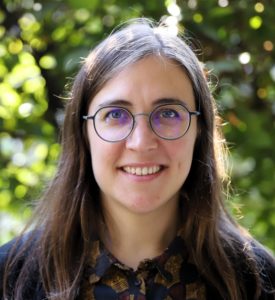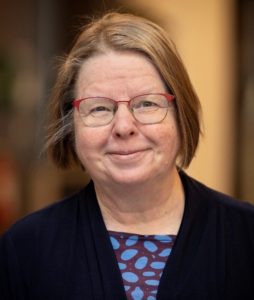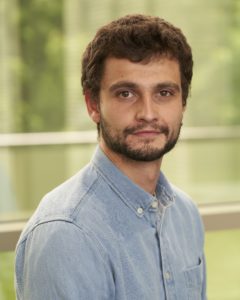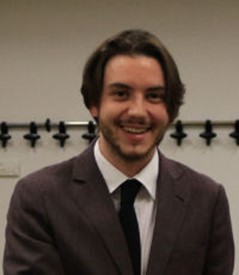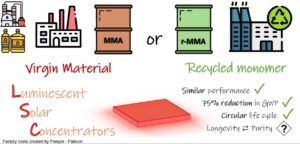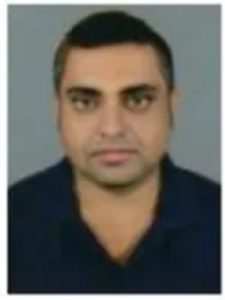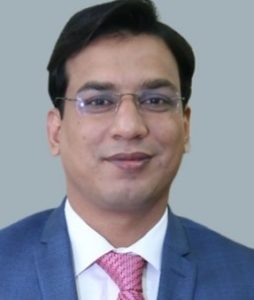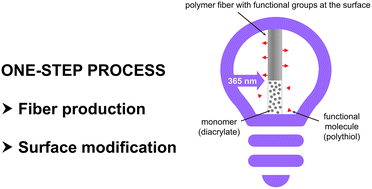
To celebrate the growth and development of the RSC Applied Polymers community and to highlight the remarkable authors who continue to contribute their high quality work to the journal we would like to share the opinions and insights of these authors through this introductory blog post. Once dubbed #RSCAppliedfirst50, our blog posts aim to give a voice to the authors behind the research and hope that their insights might shed light upon growing challenges and progress in polymer science and its applications.
In this post we feature insights into ‘Enhancing microplastic capture efficiencies with adhesive coatings on stainless-steel filters‘ by Malavika Ramkumar
Insights into ‘Enhancing microplastic capture efficiencies with adhesive coatings on stainless-steel filters‘ by Malavika Ramkumar.
Please provide a brief summary of the research carried out in the paper.
“The goal was to capture microplastics using an adhesive-coated stainless-steel filter. Within this context,
we evaluated several adhesives, substrate architectures, and coating methods, and ultimately identified
poly(2-ethylhexyl acrylate) as the best adhesive when applied via dip-coating onto a stainless-steel mesh
filter. The capture efficiencies were evaluated with different types and sizes of microplastics, which was
analyzed using flow cytometry. To demonstrate that this filter can successfully capture microplastics under
real-world conditions, the optimized filter was tested using microplastic concentrations similar to what is
found in drinking water.”
How do polymers play a key role in this application?
“The adhesives used in the filter are polymers, and of course, the microplastics are polymers as well. We
varied the chemical structure of the adhesives to optimize the relevant intermolecular interactions
(hydrophobic and van der Waals) between the adhesive/microplastic as well as the adhesive/stainless
steel. Notably, high capture efficiencies were only achieved when the adhesive is present (compared to the
uncoated stainless-steel filter).”
How has your research developed over time?
“In 2021, we reported microplastics capture from water using adhesive-coated zirconium silicate beads.(1)
However, we noticed that the adhesive was shedding and clumping between the beads over time when
exposed to water. Therefore, in this new work, we switched to stainless-steel beads and found that they
attenuated this adhesive migration. In addition, to increase surface area, we switched to a stainless-steel
mesh filter, rationalizing that its webbed network might increase microplastics capture. Finally, while our
2021 reported utilized relatively high microplastic concentrations (1 mg per milliliter), in this new work, we
used extremely low concentrations (0.01 mg per liter), similar to that found in drinking water.”
(1) P. T. Chazovachii, J. M. Rieland, V. V. Sheffey, T. M. E. Jugovic, P. M. Zimmerman, O. Eniola-Adefeso,
B. J. Love and A. J. McNeil, ACS EST Engg., 2021, 1, 1698–1704.
What are the next steps for this research?
“We are most interested in accelerating microplastic capture rates, improving capture efficiencies, and
simplifying the filter system. As an example, we are currently targeting high capture efficiencies with just a
single pass through the filter.”
What have been some of the greatest challenges faced in your research?
“Developing technologies to remove micro- and nanoplastics from drinking water is an important area of
research to minimize human consumption, yet there are many challenges. For example, it can be difficult
to get an accurate count as the micro- and nanoplastics are small and their concentrations are low. In this
work, we used flow cytometry and a stereomicroscope for our analysis, however, both have limitations. We
continue to explore alternative approaches.”
What other areas of research do you find particularly exciting?
“I think chemists, and in particular polymer chemists, have a lot of opportunities to think about how we can
contribute to alleviating the societal burdens of plastic waste (including micro- and nanoplastic pollution).
We can invent new materials, new or improved recycling processes, capture and repurpose microplastics,
and more. We need all the creative scientists out there thinking about unique and useful solutions.”
 Malavika Ramkumar |
Malavika Ramkumar
Malavika Ramkumar is a Chemistry PhD candidate in Prof. Anne McNeil’s group at the University of Michigan. Her current research focuses on quantifying and characterizing microplastics in groundwater. Prior to joining the University of Michigan, Malavika obtained a B.S. in Chemistry from Shiv Nadar University in India. However, she gained most of her undergraduate research experience by working in Prof. Hatsuo Ishida’s group at Case Western Reserve University, OH, where she developed green polybenzoxazines for various applications. |
 Woojung Ji |
Woojung Ji
Dr. Woojung Ji was a postdoctoral research associate in Prof. Anne McNeil’s group at the University of Michigan from 2021-2023 where she worked on developing adhesives to capture microplastics from water. She obtained her PhD in chemistry from Northwestern University in 2021 under the guidance of Prof. William Dichtel. Before joining Northwestern, she obtained a B.S. in chemistry from Trinity College. Woojung is now a research scientist at Samsung SDI R&D. |
 Henry Thurber |
Henry Thurber
Henry Thurber is currently a PhD student working under Prof. Anne J. McNeil in the Macromolecular Science and Engineering Program at the University of Michigan. He received his B.S. in Materials Engineering from Iowa State University. Before coming to Michigan, he worked on biobased polymeric materials for food packaging under Prof. Greg Curtzwiler. Currently, his research focuses on microplastic remediation from drinking water. |
 Madeline Clough |
Madeline Clough
Madeline Clough obtained her B.S. in Chemistry from Central Michigan University, where she worked to develop pharmaceuticals to treat atherosclerosis. She is now a PhD candidate in the Department of Chemistry at the University of Michigan. Under the guidance of Professor Anne McNeil, Madeline’s current research focuses on the sampling and analysis of atmospheric microplastics in the state of Michigan. |
 Sarena Chirdon |
Sarena Chirdon
Sarena Chirdon received her B.S.E. Chemical Engineering at the University of Michigan in 2024. She was an undergraduate research student with Prof. Anne J. McNeil, where she worked on microplastics capture using novel adhesives. Currently, Sarena is preparing to enter law school to pursue a J.D. and become a practicing attorney in the field of environmental law. |
 Anne McNeil |
Anne McNeil
Prof. Anne McNeil is the Carol A. Fierke Professor of Chemistry at the University of Michigan, where she is also a member of the Macromolecular Science and Engineering Program and the Program in the Environment. Her research is focused on sustainable materials, with interests in the chemical recycling of waste plastics, renewable energy storage in redox flow batteries, as well as measuring and removing microplastics in the environment. |
RSC Appl. Polym., 2024,2, 456-460
 |
RSC Applied Polymers is a leading international journal for the application of polymers, including experimental and computational studies on both natural and synthetic systems. In this journal, you can discover cross-disciplinary scientific research that leverages polymeric materials in a range of applications. This includes high impact advances made possible with polymers across materials, biology, energy applications and beyond. |






